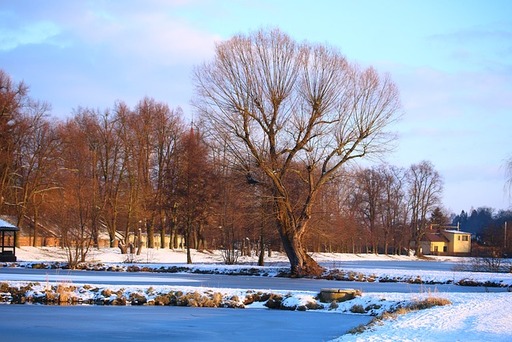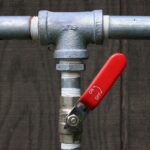
Ice dams are a significant concern for homeowners, particularly in regions with cold winters. These dams form when snow on the roof melts and then refreezes at the eaves, creating a barrier that prevents proper drainage. This can lead to water seeping under shingles, causing damage to the roof, insulation, and even the interior of the home. To prevent water damage from ice dams, it is crucial to address the root causes. Adequate insulation and ventilation in the attic are essential to maintaining a consistent roof temperature and preventing the melting and refreezing cycle that leads to ice dam formation. Additionally, removing snow from the roof using a roof rake can minimize the amount of melting snow that contributes to the formation of dams. Installing heat cables along the eaves can also help by providing a constant source of heat to prevent ice accumulation.
In addition to these preventive measures, proactive maintenance is key to minimizing the risk of water damage. Regularly inspecting the roof for signs of ice dams, such as icicles hanging from the eaves, and promptly addressing any issues can prevent potential damage. Sealing any gaps or cracks in the attic, roof, or walls can also help to maintain a consistent temperature and reduce the likelihood of ice dams forming. Homeowners should be aware of the importance of proper drainage and ensure that gutters and downspouts are clear of debris to allow melted snow to flow away from the house. By taking a comprehensive approach to ice dam prevention, homeowners can safeguard their properties from the destructive effects of water damage during the winter months.
See also our post on Cleaning Up After Water Damage: A Comprehensive Guide
Understanding the Causes of Ice Dams
Ice dams form when snow on the roof melts and refreezes at the eaves. This occurs due to varying temperatures on the roof surface. Understanding the causes is crucial for effective prevention.
- Inadequate Insulation: Insufficient insulation allows heat to escape from your home, warming the roof and contributing to ice dam formation.
- Poor Ventilation: Improper attic ventilation hinders the escape of warm air, creating an environment conducive to ice dams.
- Snow Accumulation: Heavy snowfall can contribute to ice dam formation, as the melting snow provides the water source.
- Roof Pitch: Low-pitched roofs are more prone to ice dams, as they have a smaller surface area for snow runoff.
- Sun Exposure: Parts of the roof exposed to direct sunlight may experience uneven melting and refreezing, leading to ice dams.
Identifying Early Signs of Ice Dams
Detecting ice dams in their early stages is crucial to preventing water damage. Keep an eye out for these signs to take timely action.
- Icicles: Large icicles hanging from the eaves may indicate the presence of ice dams.
- Water Stains: Discoloration on walls or ceilings can signal water seepage caused by melting ice.
- Drip Patterns: Notice patterns of water dripping from the roof edge, as this may indicate ice dam-related leaks.
- Frozen Gutters: Ice buildup in gutters is a clear sign that melting snow is not draining properly.
- Visible Ice on Roof: If you can see ice patches on your roof, especially near the eaves, it’s a warning sign of potential ice dam issues.
Insulating and Ventilating Your Attic
Proper insulation and ventilation play a crucial role in maintaining an even roof temperature, preventing the conditions that lead to ice dam formation.
- Add Insulation: Increase attic insulation to reduce heat transfer from your living space to the roof.
- Seal Gaps: Identify and seal any gaps or cracks in the attic floor or walls to prevent warm air from escaping.
- Install Vents: Ensure adequate attic ventilation by installing vents to promote air circulation.
- Ridge Vents: Consider adding ridge vents along the peak of your roof for efficient hot air escape.
- Soffit Vents: Install soffit vents to allow cool air to enter the attic and balance the temperature.
Snow Removal Techniques
Managing snow accumulation on your roof is a proactive approach to preventing ice dams. Explore safe and effective snow removal techniques.
- Use a Roof Rake: Safely remove snow from the ground using a long-handled roof rake to prevent ice dam formation.
- Professional Snow Removal: Hire professionals to safely clear heavy snow accumulation from your roof.
- Calcium Chloride Ice Melt: Sprinkle calcium chloride on the roof to help melt existing ice dams and prevent further buildup.
- Create Snow Channels: Strategically shovel snow to create channels, allowing melted snow to drain without forming dams.
- Avoid Damaging Roof: When removing snow, use gentle techniques to avoid damaging your roof’s surface.
Installing Heat Cables
Heat cables, or roof heating cables, can be effective in preventing ice dams by promoting controlled melting.
- Proper Installation: Ensure heat cables are installed correctly along the roof edge and gutters.
- Use Timer Controls: Implement timer controls to activate heat cables during peak ice-forming hours.
- Regular Maintenance: Inspect and maintain heat cables regularly to ensure they are functioning correctly.
- Consult a Professional: If unsure, seek professional guidance for the proper installation and use of heat cables.
- Energy Efficiency: Opt for energy-efficient heat cables to prevent ice dams without significantly impacting your utility bills.
See also our post on Water Damage Restoration Guide: How to Restore Property After a Disaster
Gutter Maintenance
Maintaining clean and functional gutters is essential in preventing ice dams and subsequent water damage.
- Regular Cleaning: Clear gutters of debris and leaves regularly to ensure proper water drainage.
- Install Gutter Guards: Consider installing gutter guards to prevent debris buildup and clogging.
- Check Downspouts: Ensure downspouts are free of obstructions, allowing melted snow to flow away.
- Redirect Downspouts: Extend downspouts away from the foundation to prevent water from pooling near your home.
- Professional Inspection: Schedule professional inspections to identify and address gutter issues promptly.
Professional Roof Inspection
Regular professional roof inspections can help identify and address potential issues before they escalate.
- Schedule Annual Inspections: Arrange for an annual roof inspection by a qualified professional.
- Address Any Issues: Promptly address any roofing issues identified during inspections to prevent ice dam formation.
- Roof Repair: Invest in necessary roof repairs to ensure the integrity of your roofing system.
- Consult with Experts: Seek advice from roofing experts on long-term preventive measures based on your specific roof type.
- Document Inspection Results: Keep a record of inspection results and implemented solutions for future reference and maintenance planning.
See also our post on A Comprehensive Guide to Assessing Water Damage in Churches and Places of Worship
Conclusion
Stay ahead of the freeze and shield your home from the potentially damaging effects of ice dams by knowing the causes of ice dams, spotting early signs, and putting preventative measures in place. Whether it be through insulation, snow removal, heat cables, gutter maintenance, or professional inspections, taking a proactive approach ensures a winter-ready home.






